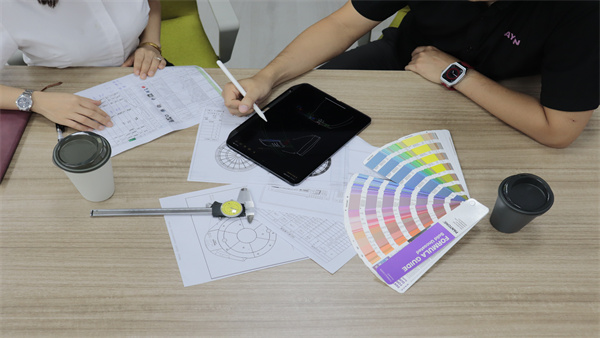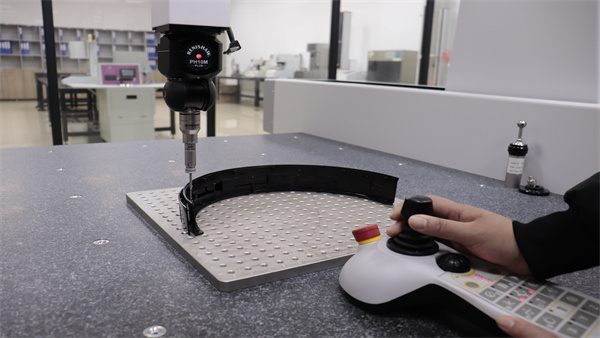Injection molding is one of the most common plastic forming methods in modern manufacturing, widely used across industries such as electronics, automotive, appliances, and healthcare.
1. Optimization of Material Selection
Material Performance Optimization
Selecting the appropriate plastic material is a foundational step in injection molded product design. Designers should base their material choices on the product’s functional requirements, usage environment, and mechanical performance needs. High-performance plastics, such as polycarbonate (PC), polypropylene (PP), and polyamide (PA), offer enhanced strength, toughness, and heat resistance, making them suitable for demanding applications.
Material Cost Analysis
In material selection, performance is essential, but cost considerations are equally important. By analyzing the prices, performance attributes, and processing costs of various materials, designers can choose high cost-performance materials that effectively reduce production costs without compromising quality.
Use of Recyclable Materials
As environmental awareness grows, utilizing recyclable materials has become a key optimization direction. Designers can opt for recyclable plastics, which reduce environmental impact while meeting the market demand for sustainable products. This approach aligns with both industry standards and consumer preferences for eco-friendly solutions.

2. Optimization of Structural Design
Simplified Design
Simplifying the product structure is key to improving production efficiency and reducing costs. By reducing part count, simplifying shapes, and optimizing dimensions, designers can lower mold manufacturing complexity and reduce the risk of defects during injection molding.
Uniform Wall Thickness
Uniform wall thickness enhances molding quality. Variations in wall thickness can lead to uneven cooling, causing warping or deformation. An optimized design should maintain consistent wall thickness to ensure material flow and cooling efficiency.
Strengthening Ribs and Support Structures
Adding reinforcing ribs or support structures in areas requiring added strength improves the product’s toughness and compression resistance. This approach also reduces material waste and increases material utilization efficiency.
Minimizing Mold Parting Line Impact
Carefully planning mold parting lines to avoid key areas of the product can reduce post-processing costs and enhance aesthetic appeal. Strategic placement of parting lines ensures a cleaner, more visually appealing final product.
3. Optimization of Process Parameters
Injection Speed and Pressure Optimization
Injection speed and pressure significantly impact molding quality. Optimizing these parameters improves material flow, ensures even filling, and minimizes bubbles and defects. Testing and simulation are valuable for identifying ideal injection conditions.
Temperature Control
Controlling mold and material temperatures is crucial for quality. Optimizing heating and cooling systems to keep molds and materials within ideal temperature ranges boosts molding efficiency and shortens cycle times.
Hold Pressure Time Optimization
Setting appropriate hold pressure time prevents shrinkage and warping. By optimizing hold time, designers ensure stability and precision in the molded product.
4. Cost Control and Optimization
Mold Design Optimization
Mold design and manufacturing costs represent a substantial portion of injection molding expenses. Optimizing mold structure to reduce complex processing steps and material usage helps lower manufacturing costs. Planning for mold durability and maintenance also plays a significant role in controlling long-term costs.
Production Process Optimization
Streamlining production processes minimizes waste and increases efficiency. By assessing the production flow and removing unnecessary steps or wait times, manufacturers can achieve higher productivity and lower costs.
Economies of Scale for Mass Production
Considering economies of scale during the design phase is effective for reducing per-unit costs. Designing standardized product series enables mold sharing and efficient use of production lines, achieving cost efficiency in mass production.
By focusing on these optimization strategies, companies can enhance the quality, efficiency, and cost-effectiveness of injection-molded products, ensuring competitiveness in the marketplace.

5. Sustainability and Eco-Friendly Design
Life Cycle Assessment (LCA)
Conducting a life cycle assessment during the design phase helps designers understand the environmental impact of a product through its production, usage, and disposal stages. By optimizing based on this assessment, the design can reduce environmental burdens.
Use of Eco-Friendly Materials
Adopting bio-based materials, biodegradable plastics, and other sustainable options is a key direction in design optimization. These materials not only meet environmental standards but also increase product competitiveness.
Energy-Efficient Design
Optimizing equipment efficiency and reducing energy consumption in the injection molding process can achieve energy-saving goals. Selecting high-efficiency injection machines and streamlining production processes not only lowers overall production costs but also reduces carbon emissions.
6. Case Study
For a consumer electronics product housing, the design underwent comprehensive optimization. The team first selected cost-effective polypropylene, analyzing material flow and strength in detail. They then simplified the housing structure, reduced part count, and ensured uniform wall thickness for consistent molding quality.
In mold design, a carefully planned cooling system and optimized injection speed and pressure enabled an efficient production process. Life cycle assessment was conducted during production to minimize environmental impact at every stage.
These optimizations led to a product that met quality standards while reducing costs and enhancing market competitiveness.
7. Future Directions for Optimization
Smart Manufacturing
Smart manufacturing technologies present new opportunities in injection-molded product design. With data analytics and machine learning, designers can monitor and optimize the design and production processes in real time, improving product quality and efficiency.
Virtual Simulation and Modeling
Applying virtual simulation technology enables more precise modeling during the design phase, allowing early detection and resolution of potential issues. This approach shortens product development cycles and enhances design accuracy.
Personalization and Customization
With growing demand for personalized products, injection molding design optimization will increasingly focus on customization. Designers must balance individualization with production efficiency.
Interdisciplinary Integration
Future product design will emphasize interdisciplinary integration, combining electronics, materials science, and design aesthetics to create innovative products. This fusion will drive ongoing optimization and advancements in injection molding design.
Injection molding design optimization encompasses various aspects, including material selection, structural design, process parameters, cost control, and sustainability. By considering these factors holistically, designers can improve product quality, reduce costs, and enhance market competitiveness. As technology advances and market demands evolve, design optimization will continue to progress, injecting new vitality into the injection molding industry.
If you’re unsure about optimizing injection-molded product design, let DAYIN Plastics help! With industry-leading technology and a team of skilled professionals, we provide comprehensive services to ensure your products stand out in the market. Contact us today!
